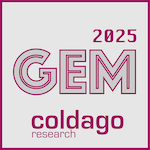Fujifilm, a key player in secondary storage, introduced Object Archive (OA) version 2 during the recent IT Press Tour. Object Archive is the name used in north America and elsewhere the product is promoted as Software-Defined Tape. This difference could explained some difficulties for prospects and partners to approach the solution as they need to learn this first.
Let's refresh our readers on Object Archive. In just a few words we can say that the product is an on-premises object storage solution exposing S3 connected to tape libraries to address long term archiving needs leveraging tape as a passive media.
OA operates as a gateway, cache, S3 and tape server and can be aligned with what VTL did in the past in the industry. VTL is dead or almost dead as it was a resistance to the wave of disk-based deduplication model for backup. VTL illustrated perfectly the shift needed for tape to archive and above all deep archive.
OA supports tape libraries equipped of LTO-7, LTO-8, IBM TS1160 and soon LTO-9.
As 1 copy of data is not enough even if tape is a reliable media, 2 copies are a minimum and are included in the Fujifilm OA subscription. We expect the tape server engine will offer RAIT or ECoT (Erasure Coding on Tape) to reduce tape consumption, increase efficiency and tolerates more errors. Of course it requires at least 3 tape drives.
The product also introduced a new tape format named Open Tape Format aka OTFormat to better support tape and align objects to the media.
By default, the air gap is obvious with such model as tape could be physically separated and never touched by a propagating ransomware.
This version 2 illustrates that the market adoption of OA requires strong partnerships especially for S3 to S3 to tape and Fujifilm picks leaders like Cloudian, Caringo or NetApp StorageGRID. These players represent strong vendors shown in the last Coldago Map 2020 for Object Storage. At the same time, the team recognize they also need to be compatible and integrated with horizontal data management and they pick Starfish and Tiger Technology. I'm surprised to not see Hammerspace, Komprise, Point Software and Systems, StrongBox Data, Data Dynamics, QStar or Versity. Especially StrongBox Data and QStar as they're listed on the Fujifilm Data Management Solutions for North America as you can see on this image below.
This is strange but I understand it's a work in progress at least we hope. These partnerships are key to penetrate the market as many of them are already deployed and OA must be validated with all of these.
OA targets vertical use cases essentially around deep archive and/or active archive. The company keeps the same pricing model introduced with version 1.
Fujifilm confirms that object storage occupies a major role today, especially its S3 access method, and tape as long term storage residence. We'll see how this solution will be adopted by the market.





















0 commentaires:
Post a Comment